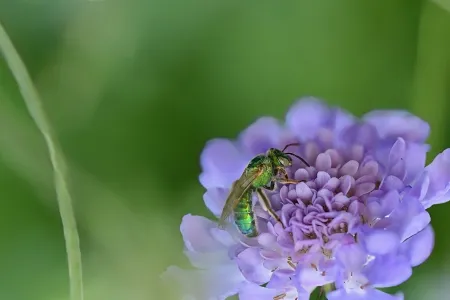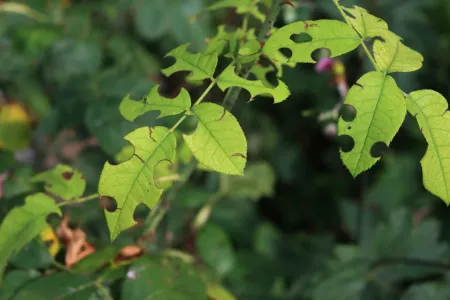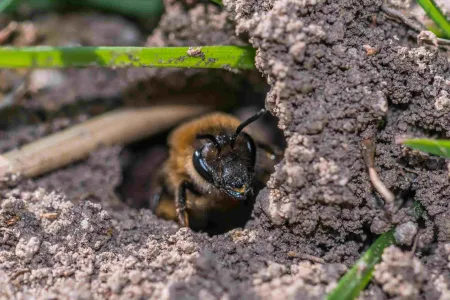Green Metallic Bee, Sweat Bee

The term ‘sweat bee’ refers to a large family of bees that are attracted to salt on a human body. There are many different species of sweat bees in the United States; approximately 1000 species. The most common sweat bee found in Arizona is the metallic green bee.
Sweat bees are easily distinguished by its brilliant color on its body. They are generally black, multi-colored (usually green or blue), or a dull metallic brown on the head/thorax with bands of hair on their abdomen.
- The female digs branching burrows in bare soil, laying eggs at the ends of the branches and providing her young with balls of pollen and nectar.
- An abundant group of bees found around farms as they are also attracted to alfalfa fields.
- Sweat Bees carry pollen on special long hairs on their body and hind legs.
- Some sweat bees are solitary and often quite small; 3-10mm.
- There is usually only a single generation of sweat bees per year.
- They sting only if handled
Leafcutter Bee

‘Leafcutter’ refers to bees that use leaves and flower petals to make their nests. There are approximately 140 known species of leafcutter bees found in the United States. They were originally introduced to western Asia in the 1930s for the purpose of commercial pollination of alfalfa. Leafcutter bees are black with white or silvery hairs on their body.
The female can be distinguished by the dense brush of hairs that is bused for carrying pollen to the nest. The leafcutter bee uses the leaves to line her nest in an opening about the diameter of a pencil; usually in a convenient small hole, crack or crevice, hollow tree, old mason wasp nest, bird nest, snail shell, or holes in wood created by boring insects.
- Solitary species of bees; each female builds her own nest independently.
- Leaf cutting bees range in size from small to moderately large; usually 1 to 2 cm long.
- Occasionally cause minor and /or temporary damage to certain ornamental plants if their large numbers of females nesting in an area.
- The bees cut leaves in a circular motion; usually a ½ inch circle from landscape plants such as roses or bougainvillea.

Sand bee, Digger bee, Mining Bee
Sand bees are solitary bees that dig nests in the ground, leaving small mounds of dirt aboveground. The entrances to their nests can be found in a pile of leaves or in the grass. These bees are sometimes referred as polyester bees because after the queen builds the nest, she lines it with a decay-resistant, waterproof lining that makes the inside glossy. This allows the nest to protect the larvae that reside underground. Sand bees are the highest population species of bees; however, are dull, and rarely noticed by people and the wild.
